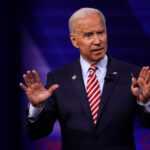
The supremacy of the US dollar as the global reserve currency is being questioned, with Asia at the forefront of this challenge. While no definitive list of countries ready to abandon the dollar exists, several Asian economies are actively seeking alternatives. This article explores the key considerations and historical context of this potential paradigm shift.
Why are they Considering De-Dollarization?
- Mitigating Risk: Countries are concerned about the impact of US sanctions or economic instability on the dollar’s value. Diversifying their currency holdings can mitigate this risk.
- Increased Sovereignty: De-dollarization provides central banks with greater control over their monetary policy, freeing them from the influence of US economic decisions.
- Emergence of Regional Powers: The economic prowess of China and the increasing significance of intra-Asian trade provide incentives for alternative reserve currencies.
Historical Precedents:
- The Nixon Shock: In 1971, the US unilaterally terminated the gold convertibility of the dollar, triggering a transformation in the global monetary system. This event could serve as a historical precedent for a potential future shift.
- The Advent of the Euro: The Euro’s introduction in 1999 posed a challenge to the dollar’s dominance in Europe, illustrating the feasibility of regional alternatives.
Challenges and Uncertainties:
- Entrenched Dollar: The US dollar is deeply ingrained in global trade and financial markets. Its replacement would be a complex and gradual process.
- Credibility of Alternatives: For an Asian currency to rival the dollar, it requires a stable, robust economy and a large, liquid financial market – a challenge for most Asian economies.
- Regional Cooperation: Coordinated de-dollarization efforts across Asia would have the greatest impact. However, reaching a consensus among diverse economies can be challenging.
The Verdict?
While a complete Asian rejection of the US dollar seems improbable in the near term, the trend towards de-dollarization is unmistakable. The ascent of Asian economies and the increasing significance of regional trade could herald a more multipolar global financial system in the long run. This shift could have profound implications for international trade, investment, and global power dynamics.
The BRICS nations, comprising Brazil, Russia, India, China, and South Africa, are contemplating the establishment of a new reserve currency backed by a basket of their respective currencies. This potential BRICS currency could enable these nations to assert their economic independence while challenging the existing international financial system, which is dominated by the US dollar, accounting for approximately 90 percent of all currency trading.
The BRICS bloc is scheduled to convene for its annual summit in Russia this October, where the topic of a new BRICS currency will be on the agenda. Amid the alliance’s de-dollarization efforts, the group is reportedly considering blockchain technology for its novel payment system.
The potential impact of a new BRICS currency on the US dollar remains uncertain, with experts divided over its ability to challenge the dollar’s dominance. However, if a new BRICS currency were to stabilize against the dollar, it could undermine the effectiveness of US sanctions, potentially leading to a further depreciation of the dollar.
As for the global economy, the success of a BRICS currency would hinge on its acceptance and influence on international investments. Volatility and a lack of trust in a new currency could deter investors, impeding economic growth.
In terms of cinematic portrayals of economic collapse, “The Big Short” (2015), directed by Adam McKay, provides a stark depiction of the events leading up to the 2008 housing market collapse and the ensuing financial crisis. This film could serve as a reference to understand the potential impact of a significant economic event like the introduction of a new global currency. However, it’s crucial to note that the circumstances and factors leading to the 2008 financial crisis and those surrounding the potential introduction of a BRICS currency are markedly different.
A more pertinent film might be “Currency Wars” (2011). This documentary, based on the book by Chinese economist Song Hongbing, delves into the global financial system and the role of central banks in manipulating currency markets. While it doesn’t directly depict the scenario of BRICS forming a new currency, it does delve into the complexities of international currency markets and the potential impacts of major shifts in those markets. This could provide some insights into the potential implications of the BRICS nations introducing a new global currency.




